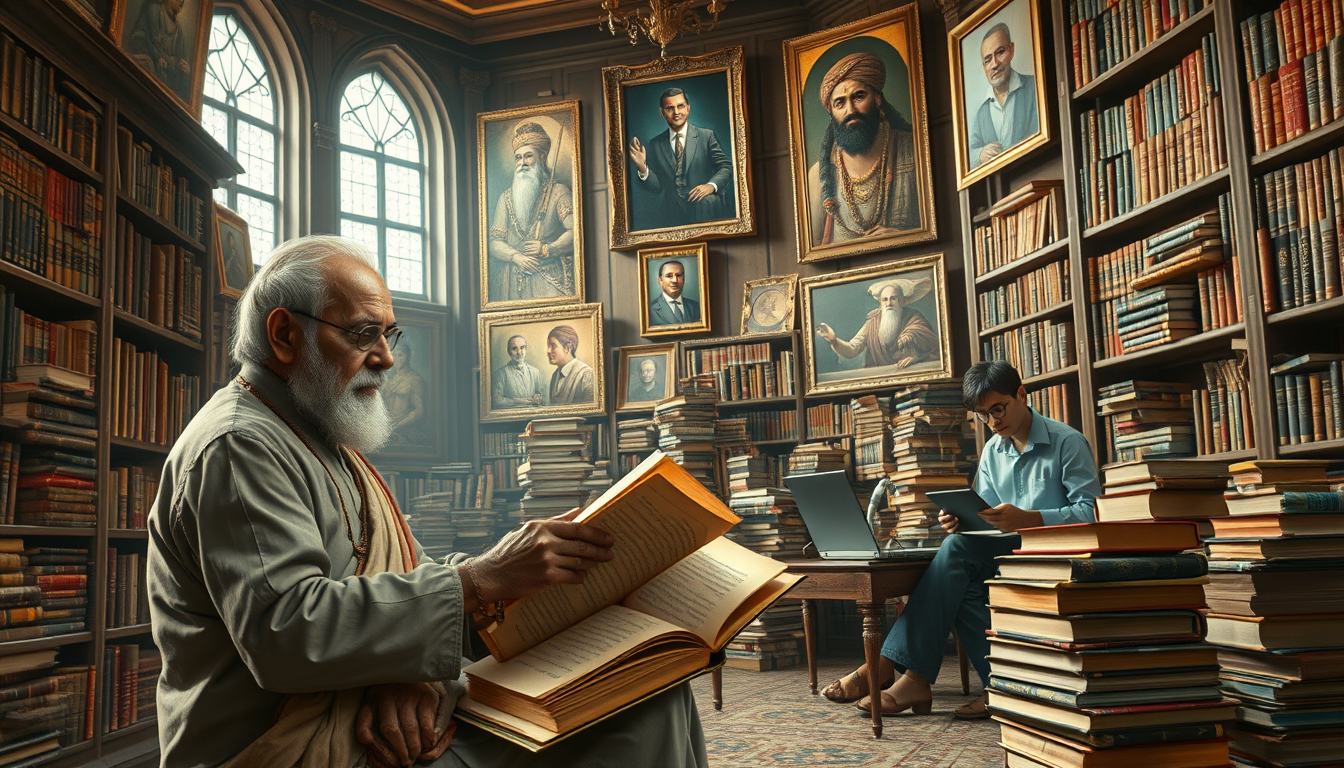Hindi, one of the most widely spoken languages in the world, has a rich history and cultural significance. Its development as a language of literature is a fascinating journey that spans centuries. This article explores the evolution of Hindi literature, highlighting key milestones, influential authors, and the impact of various historical and cultural factors on its growth.
The Early Beginnings of Hindi Literature
Vedic Period and Sanskrit Influence
The origins of Hindi can be traced back to the Vedic period, around 1500 BCE, when the language was heavily influenced by Sanskrit. The Vedas, ancient Hindu scriptures, were composed in Sanskrit and laid the foundation for the development of Hindi. However, the language as we know it today began to take shape during the medieval period.
Medieval Period and the Development of Hindi
During the medieval period, Hindi started to emerge as a distinct language. It was influenced by various regional dialects and the Persian language, which was widely used in the courts of the Mughal Empire. This period saw the development of the Devanagari script, which became the standard script for Hindi.
The Golden Age of Hindi Literature
The Bhakti Movement
The Bhakti movement, which emerged in the 14th century, had a significant impact on the development of Hindi literature. This movement emphasized devotion to a personal god and was characterized by a simple, emotional, and accessible style of poetry. The works of poets like Kabir, Mirabai, and Surdas are notable examples of this period.
The Influence of Persian and Arabic
The Mughal Empire, which ruled much of India from the 16th to the 19th century, had a profound impact on Hindi literature. Persian and Arabic, the languages of the court, influenced the style and content of Hindi literature. Many poets and writers of this period wrote in a mix of Persian and Hindi, creating a unique literary style.
The Works of Tulsidas
Tulsidas, a 16th-century poet, is considered one of the most influential figures in Hindi literature. His epic poem “Ramcharitmanas” is a retelling of the Ramayana in Awadhi, a dialect of Hindi. This work is widely regarded as a masterpiece and has had a lasting impact on Hindi literature and culture.
The Modern Period and the Growth of Hindi Literature
The Impact of British Rule
The British colonial period had a significant impact on Hindi literature. The introduction of Western education and the printing press led to a new wave of literary activity. Many writers began to experiment with new styles and forms, drawing inspiration from both Indian and Western literary traditions.
The Role of Nationalism
The Indian independence movement, which gained momentum in the late 19th and early 20th centuries, had a profound impact on Hindi literature. Writers began to use their work to express nationalist sentiments and challenge colonial rule. The works of authors like Rabindranath Tagore and Bankim Chandra Chatterjee are notable examples of this period.
The Development of Hindi Prose
The modern period also saw the development of Hindi prose. Writers began to experiment with new narrative techniques and styles. The works of authors like Premchand and Munshi Premchand are considered landmarks in the development of Hindi prose.
Contemporary Hindi Literature
The Influence of Globalization
Globalization has had a significant impact on contemporary Hindi literature. Writers are now drawing inspiration from a wide range of sources, including Western literature, film, and popular culture. This has led to a diverse and dynamic literary scene.
The Role of Women Writers
Women writers have played a significant role in the development of contemporary Hindi literature. Authors like Mahasweta Devi, Kamala Das, and Anuradha Roy have challenged traditional gender roles and explored themes of identity, sexuality, and social justice.
The Impact of Technology
The digital age has also had a significant impact on Hindi literature. The rise of the internet and social media has made it easier for writers to reach a wider audience. Self-publishing platforms have also democratized the publishing process, allowing more writers to share their work.
Conclusion
The development of Hindi as a language of literature is a complex and multifaceted process. From its early beginnings in the Vedic period to its modern-day manifestation, Hindi literature has evolved and adapted in response to historical, cultural, and political factors. Today, Hindi literature is a vibrant and diverse field, reflecting the rich cultural heritage of India and its engagement with the global literary scene.
References
1. “Hindi Literature” by R. K. Dharamvir
2. “The Bhakti Movement” by A. L. Basham
3. “The Ramcharitmanas” by Tulsidas
4. “The Indian Renaissance” by A. K. Ramanujan
5. “Contemporary Hindi Literature” by Amitava Ghosh
